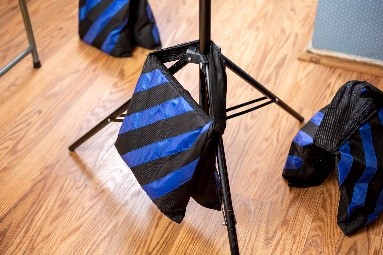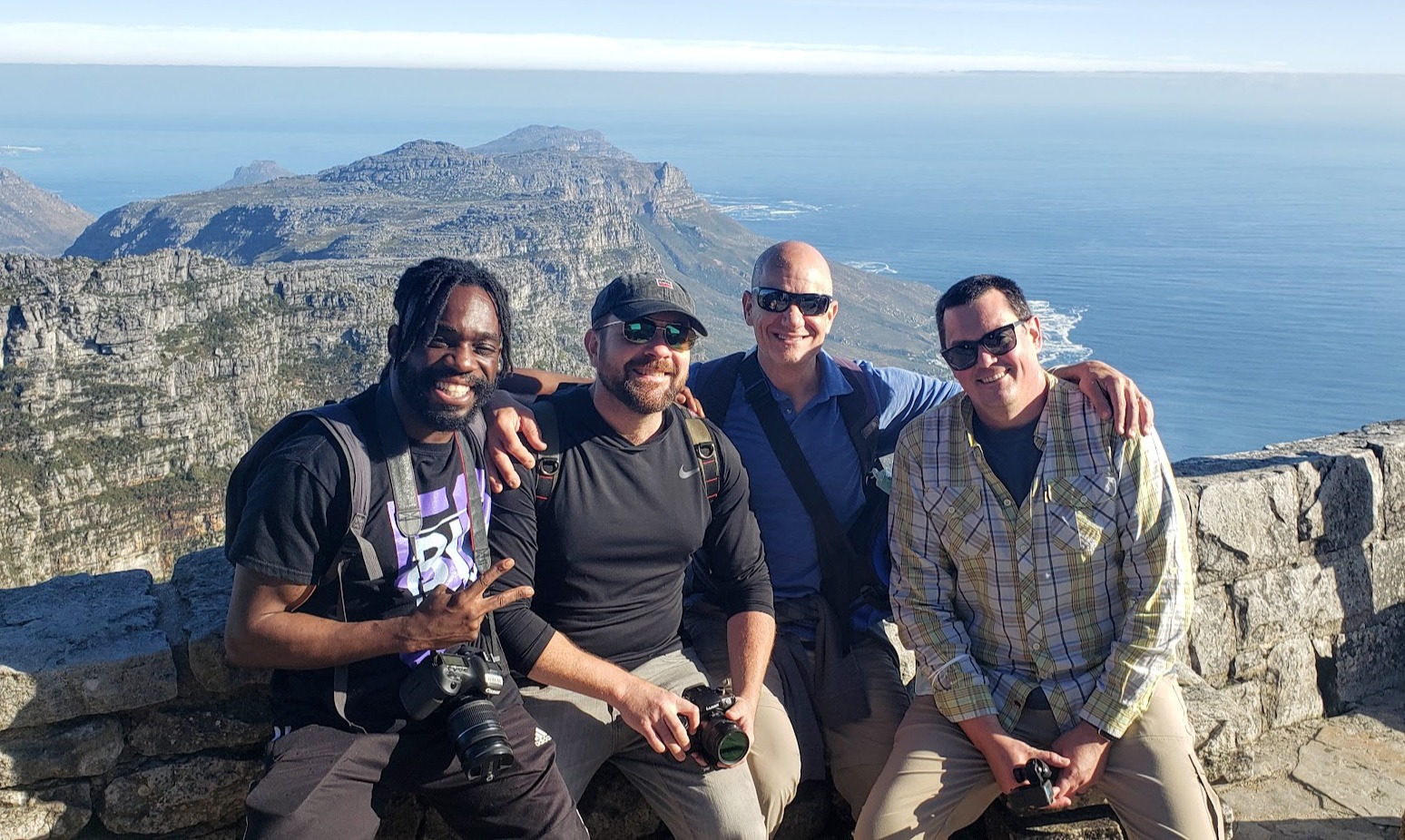Traveling internationally, or even domestically, by air presents challenges when you’ve got a quarter ton plus of equipment in tow.
Excess bag fees, space restrictions, safety restrictions (in terms of what is and isn’t allowed on board an airplane), and simply the weight and logistics of transporting our gear can make for an exceedingly difficult and expensive undertaking.
Fortunately, as a professional and experienced video production company, we’ve learned workarounds and ‘hacks’ to make our jobs, lives, and your project a little bit easier and less stressful. Below we share some tricks we’ve learned in our travels, with examples, that contribute to our offering quality video production services to our clients.
Sandbags are critical to quality video production
Sandbags, sometimes called ‘shot bags’ or ‘saddle bags,’ help guarantee reliability in video and audio quality. They are vital to any video production set. When we set up lights, audio stands or monitor stands, etc., a strategically placed sandbag (typically filled to between 10 and 20 pounds) ensures that the fixture will not move.
This is important in ensuring the quality and consistency of our lighting and audio, of course, but even more important from a safety standpoint, as a falling light or boom mic could inflict serious damage on people and property.
Sometimes a shot bag’s value is more ‘basic’ than that – a 15 lb bag of sand is a great way to prop a door wide open, for instance, and can keep our equipment cart from rolling away. Depending on the production need and set, we could employ as few as 4 or 5 or as many as a couple of dozen. So, when traveling by plane, how do we get 100 pounds of sand in bags from point A to point B?
The answer is simple: We don’t!
Travel light
When flying, we empty our sandbags for transport – this way, they take up less packing space and lighten our equipment load considerably. Of course, this adds a task to our obligations upon arrival: getting them filled up before our first shoot. Domestically, this is as simple as a quick trip to Home Depot or Lowe’s on our way from the airport to our destination. But in Kazakhstan or Albania, for instance, a traditional ‘hardware store’ may not be as easy to find.
Yes, we’ve been known to pull over on the side of a rural highway (or urban construction site) to fill our bags with dirt or construction and demolition debris. As the saying goes: One man’s trash is another man’s treasure. And in the past year, you’d have been just as likely to see us ‘returning’ sand to the beaches of Fort Lauderdale, Florida, or Cape Town, South Africa. (L to R – Gary, Alan, Jay & Ben)
On a recent shoot in Costa Rica, we hit up the Walmart right by the San Jose airport en route to our Airbnb, where we spent the afternoon of our arrival day filling our bags and otherwise prepping gear for the shoot ahead, albeit poolside 😊.

Be prepared with shooting equipment
Having the right tool for the job is critical in any profession. But in the video production world, whether making a sales and marketing video, educational or training production, TV commercial, Public Service Announcement, fund-raising show, or what have you, being properly equipped is everything. And as critical as it is when shooting ‘on-set’ at our facility (or other ‘controlled’ environment), it is absolutely essential when producing video on the road.
Depending on the situation, this can require much planning and preparation. Sure, when we are shooting in a studio or producing at a client’s place of work, it’s easy to count on being able to use whatever equipment we require. We can always run in back at our shop or out to our vehicle at a client’s place and grab what we need. But certain situations require a ‘stealthier’ approach, and we rarely have every video production tool at our disposal when on the road. Knowing what to bring and what to leave home is vital.
Know the local laws
This past summer, we were in Cape Town, South Africa, and needed to shoot our subjects ‘day in the life’ activity as part of a recruitment video we were producing for the U.S. Department of State. Our pre-scout confirmed that heading to the iconic Table Mountain would yield tremendous visuals and be an awesome opportunity to capture some beautiful b-roll of our subjects and the city.
When we arrived at the incredible location with our larger format cameras, we were informed (as we suspected might be the case) that no ‘commercial’ shooting could be completed atop the mountain without a permit, and acquiring a permit would take days – days we didn’t have – “Tourist” cameras only, basically.
Fortunately, our team of professionals anticipated this potential likelihood and had packed and prepared accordingly. So before boarding the tram that would take us atop the mountain, we switched out our gear and enacted our “Operation Tourist Mode” 😊.
Thanks to today’s video production technology, a skillfully operated GoPro camera and one of our slimmed-down DSLR packages can, in the hands of our skilled video production team, yield broadcast (if not cinema) quality visuals worthy of the rest of the footage in our video. Moreover, these respective camera ‘packages’ pass the ‘tourist test’ and ensure we get what we need without making any waves.
In this case, we got what we needed and then some – a gorgeous day, an unbelievable view, a happy client, and another successful production means smiling faces all around. (L to R – Alan, Jay, Gary & Ben)
Bottom line
These tips for traveling with your video production equipment are invaluable. We learned them through the school of hard knocks as we always strive to provide clients with top-notch quality productions, within the agreed upon parameters, timelines, and budgets.
For stunning videos, contact Braun Film & Video Inc today.







